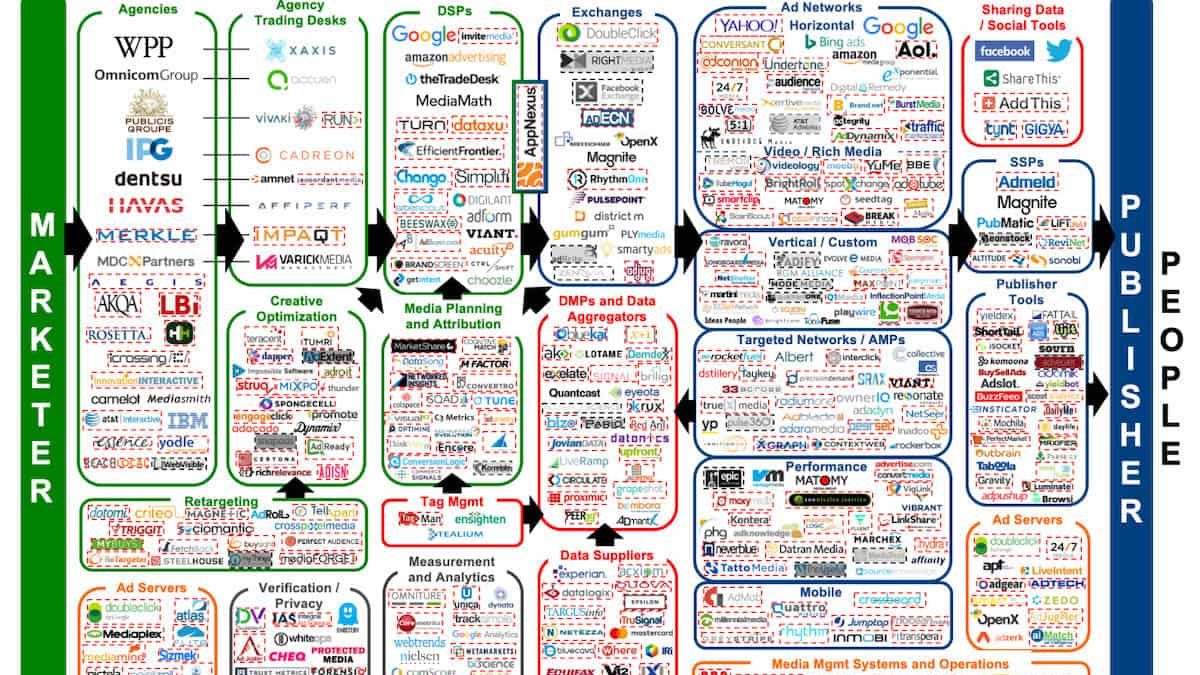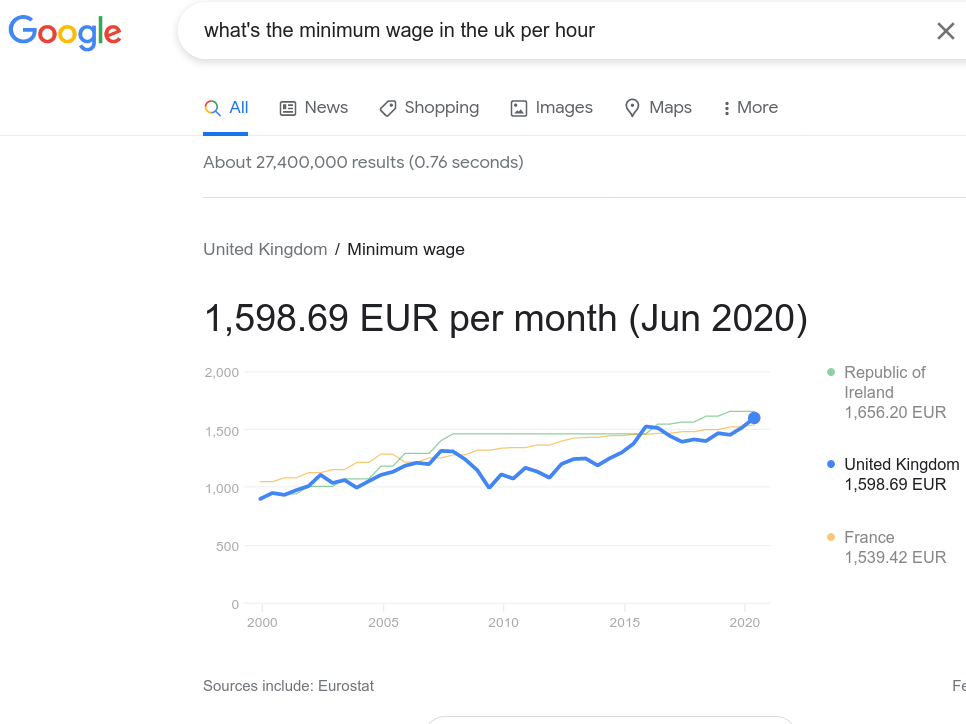
Wildfires in Siberia are being prompted by global heating, but is Russia really committed to phasing out its carbon emissions? CC-licensed photo by Tatiana Bulyonkova on Flickr.
You can sign up to receive each day’s Start Up post by email. You’ll need to click a confirmation link, so no spam.
A selection of 10 links for you. Part of the metachorus. I’m @charlesarthur on Twitter. Observations and links welcome.
| • How important are algorithms in what we see on social networks? • Why does angry content seem to dominate what we see? • Do social networks affect what politicians choose to say? • What can we do about it? • Does it matter in countries where social media use is low? Read Social Warming, my latest book, and find answers – and more. |
Facebook changes corporate name to Meta • The New York Times
Mike Isaac:
»
The change was accompanied by a new corporate logo designed like an infinity-shaped symbol that was slightly askew. Facebook and its other apps, such as Instagram and WhatsApp, will remain but under the Meta umbrella.
The move punctuates how Mark Zuckerberg, the chief executive, plans to refocus his Silicon Valley company on what he sees as the next digital frontier, which is the unification of disparate digital worlds into something called the metaverse. At the same time, renaming Facebook may help distance the company from the social networking controversies it is facing, including how it is used to spread hate speech and misinformation.
“I’ve been thinking a lot about our identity” with this new chapter, Mr. Zuckerberg said, speaking at a virtual event on Thursday to showcase Facebook’s technological bets on the future. “Over time, I hope we’re seen as a metaverse company.”
With the change, Mr. Zuckerberg telegraphed that his company was going beyond today’s social networking, which Facebook has been built on since it was founded 17 years ago. Having Facebook as the corporate name when the company now owned many apps and was fundamentally about connecting people was no longer tenable, he said.
That was especially the case, Mr. Zuckerberg said, as Facebook has committed to building a composite universe melding online, virtual and augmented worlds that people can seamlessly traverse. He has said that this concept, known as the metaverse, can be the next major social platform and that several tech companies will build it over the next 10-plus years.
«
Ten years? In 2011, Instagram was just getting going (Facebook bought it the next year), WhatsApp was a couple of years old but already a top 20 (iOS) app, Facebook had 430 million mobile users, the newest iPhone was the 4S, with the newfangled “Siri” assistant. Things can change, though I’m always dubious about people’s willingness for the disintermediation implied by full-scale metaversing. (Meanwhile, Wikipedia is on the case.)
unique link to this extract
The Facebook Papers’ missing piece • Platformer
Casey Newton:
»
The coverage so far — my own included — reflects a naïveté about the role of Workplace posts in Facebook’s internal culture, this former [Facebook] employee told me. Some posts are simply much more credible than others, they said, based on a variety of factors. But because the names (and therefore job titles) of employees are redacted in the documents, it can be very difficult to sort out how much credibility to assign to any particular file.
Of course, Facebook executives have been saying this publicly since the Wall Street Journal began publishing the Facebook Files. But the former employee walked me through what they called “the posting culture” of Facebook in a way I found illuminating. Their point wasn’t that the documents aren’t newsworthy — just that reporters should add more context when reporting on them. In particular, Workplace — a clone of Facebook that the company uses to manage its internal collaboration, and sells as a service to other companies — shapes the organization in ways that are rarely commented upon.
Casey Newton: So what’s your beef with the coverage?
Former Facebook integrity employee: Something missing from the Facebook Papers discourse is placing Workplace posts in the proper organizational context.
These are being described as Facebook Papers and Facebook Files and Leaked Documents, but really the right way to understand them (for the most part) is they are posts and comment threads. And I think that the hyper-collaborative culture driven by Workplace is probably alien to a lot of people, who don’t understand the Poster’s culture that thrives at Facebook.
CN: I would love to hear more about this.
FFIE: Basically: anyone can post anything about anything at any time, and their posts might be good or bad or not terribly well thought out, and they might not have very much context about the thing they’re posting about.
So a lot of what is getting described as “internal debate” is really just posters posting because they are procrastinating from doing their real job. It doesn’t mean it’s not important or not worth looking at, but a lot of the Facebook Papers are given a lot more gravitas than they probably deserve. These are off-the-cuff conversations between people who for the most part are not involved with deliberations or decision-making, but just wanted to weigh in because an announcement post happened to come across their (algorithmically sorted and optimized for engagement) Workplace feed.
«
Facebook uses Facebook to organise its internal debate. I think there’s a clue to the problem.
unique link to this extract
Apple announces record fourth quarter • Six Colors
Jason Snell:
»
The company generated $83.4bn in revenue. (The previous two fiscal fourth quarters showed very low growth over the previous year, so this year’s 29% increase in revenue year-over-year is especially impressive.)
iPhone sales were $38.9bn, up 47% versus the year-ago quarter. It was a very good year for the iPhone business. Services were $18.3bn, continuing their relentless growth pace at 26% above the year-ago quarter.
Wearables sales were $8.8bn, up 12% versus the year-ago quarter. That’s a good number out of context, but actually the slowest year-over-year growth rate for the category in almost five years. It’s a very seasonal business, though, so to truly judge the state of Apple’s wearables business, we should wait until the holiday quarter.
iPad sales were $8.3bn, up 21% versus the year-ago quarter. The iPad business has averaged almost $8bn in sales per quarter over the last year. We’ve seen six straight quarters of year-over-year growth for the iPad, 10 of 12, and 14 of 18.
Mac sales were $9.2bn, up 2% versus the year-ago quarter. Despite the Mac’s smaller year-over-year growth number, it’s important to keep in mind that last year’s fourth quarter was the best Mac quarter ever at the time, and now this is a new all-time record quarter in terms of Mac revenue.
«
These quarterly iPhone numbers may be slightly distorted (upwards) because rollout came later last year, as I recall. That would mean there were four really good quarters.
In three months’ time, we’ll see what the effect of the new MacBook Pros has been. Substantial, I’d guess, but nothing like the release of an iPhone. Tim Cook also said the company could have sold even more but for supply chain woes (not his exact words).
unique link to this extract
Missing the point: when AI manipulates free speech, censorship is not the solution • OneZero
Lessig:
»
If you’re going to understand the problem that Frances Haugen is describing, you have to begin with technology. And there is no better technology story to begin with than the one Pro Publica broke four years ago.
In that story, Pro Publica described how Facebook had begun offering a new category of users to Facebook advertisers: “Jew-haters.” Anyone eager to reach “Jew-haters” now had a simple way to do so: Facebook would give you access to the people they had identified as “Jew-haters,” at least if you paid them the right price. Your “Jew-hating” content could then be safely delivered to them, and only to them. Perfect market efficiency, and yes, this actually happened.
When the story broke, Facebook acted astonished and then acted quickly to turn off this (to the racists, at least, very valuable) feature of the Facebook advertising platform. But Facebook didn’t fire the author of that category. It didn’t even dock his pay. Because that category was authored by the one employee (other than Zuckerberg) that Facebook will never fire: its AI. It was Facebook’s genius AI that had decided that advertising to “Jew-haters” was a good idea. It was Facebook’s genius AI that had crafted that category and then had begun to offer it to Facebook’s advertising users.
Now you could, of course, describe the decision by Facebook to terminate the category “Jew-haters” as “censorship.” A category of speech is speech; deciding to ban it is the decision to ban speech. You could say that all this was just more evidence of the Vast Leftwing Conspiracy that is so effectively destroying free speech in America today.
Or you could simply say that this was an example of Facebook censoring no one’s speech — because literally, no one had spoken. A machine, trained on a simple objective — maximize ad revenue — had discovered a technique that helped it do just that. Of course, it had used speech to achieve that objective — “Jew-haters.” But to describe what that machine had done as “to speak” or “speech” is just to confuse that vital and democratically critical ideal with the output of a profit-maximizing device. Machines don’t speak; people do.
«
A smart piece; irresistible too for its swipe at the reliably idiotic and incoherent Glenn Greenwald.
unique link to this extract
Dropbox clarifies that a native Apple Silicon app is coming in 2022 after forum outrage • The Verge
Chaim Gartenberg:
»
Dropbox will finally be updating its Mac app to natively support Apple Silicon sometime in the first half of 2022, the company confirmed today. A previous forum thread saw Dropbox staffers claim that a native app would require “a bit more support before we share your suggestion with our team.”
The months-old thread was resurfaced in a post by developer Mitchell Hashimoto on Twitter (spotted by MacRumors), sparking complaints from Dropbox users who were disappointed by the impression that the company would only develop the app if enough customers asked for it. While Dropbox technically does work with Apple Silicon hardware thanks to Apple’s Rosetta 2 software translation layer, it’s not as power- or memory-efficient as it could be if it ran natively.
In response to the confusion, Dropbox’s CEO Drew Houston clarified that the service is “certainly supporting Apple Silicon” and that it’s been “working for a while on a native M1 build which we aim to release in H1 2022.” Houston also apologized for the support thread responses, which he called “not ideal.”
«
Dropbox has gradually grown in unpopularity on the Mac it demands all sorts of access (effectively, root) that people are wary about. Though it doesn’t quite say why, it seems to be because it needs to see every file and file location that has been changed, to determine whether any of those is in the Dropbox folder.
If you don’t like all those demands, you can try Maestral, an open source app that uses the Dropbox API. It seems less intrusive. Just don’t try to make it sync to the folder that is already your Dropbox folder; create a different one. (Of course, you can just use the Dropbox website. Or use something other than Dropbox, but it’s popular.)
unique link to this extract
What can we expect from Russia at COP26? • openDemocracy
Natalie Sauer:
»
Russia could aim to slash its greenhouse gas emissions by 79% from current levels by 2050, according to Kommersant, which has seen the draft of the new net-zero strategy.
Under the strategy’s “intense scenario” of Russian climate change policy, the country’s emissions are set to peak by 2030, rising only by 0.6%. By comparison, Russia’s previous plan would have seen emissions increase through 2050 and not drop to net zero for another 80 years, until 2100.
But expert opinion is cautious about how far Russia’s green turn really goes.
Bobo Lo, an associate research fellow at the French Institute of International Relations (IFRI), says that “Fossil fuels are Russia’s great comparative advantage, and it is unthinkable to me that it would voluntarily give this up.” “Saying is one thing, doing is quite another!” he adds.
Lo pointed out that Russia’s 2035 Energy Strategy currently forecasts a 50% increase in gas production to 2035, and the 2035 Coal Production Strategy also envisages a surge in coal production.
“How is any of this compatible with a net-zero commitment? It isn’t, but then again 2060 is a long way away,” Lo says. “By that time, these commitments will have been overtaken by events.”
Russian energy minister Nikolay Shulginov told the Russian Energy Week forum two weeks ago that the 2060 net-zero target meant that the country would have to diversify its energy mix and revise the 2035 Energy Strategy.
But rather than a genuine ecological transition, Lo reads Russia’s new commitment as an attempt to “be seen as an upstanding member of the international community”, noting that it’s important for the Russian leadership not to be “an outlier at a time when there is broad consensus on the threat global warming poses”,
«
Siberia is warming fast, and wildfires are getting out of control there. The ideal would be to find a way to reward Russia (and other oil/gas companies) for not extracting their fossil fuels. Though that would also need us to not want to burn them.
unique link to this extract
Why you should delete your Facebook app • Forbes
Zak Doffman:
»
A week ago, I warned iPhone users that Facebook still captures location data using the metadata from your photos and your IP address, even if you update your settings “never” to track your location. Facebook admits to this harvesting, refusing to be drawn on why that’s so wrong when users specifically disable location tracking.
Now security researchers have suddenly warned that Facebook goes even further, using the accelerometer on your iPhone to track a constant stream of your movements, which can easily be used to monitor your activities or behaviors at times of day, in particular places, or when interacting with its apps and services. Alarmingly, this data can even match you with people near you—whether you know them or not.
Just like the photo location data, the most serious issue here is that there is absolutely no transparency. You are not warned that this data is being tracked, there is no setting to enable or disable the tracking; in fact, there doesn’t seem to be any way to turn off the feature and stop Facebook (literally) in its tracks.
Researchers Talal Haj Bakry and Tommy Mysk warn that “Facebook reads accelerometer data all the time. If you don’t allow Facebook access to your location, the app can still infer your exact location only by grouping you with users matching the same vibration pattern that your phone accelerometer records.”
The researchers say the issue impacts Facebook, Instagram and WhatsApp, albeit with WhatsApp, it’s possible to disable the feature and the platform assured me that no data ever leaves a user’s device. “In Facebook and Instagram,” Mysk told me, “it is not clear why the app is reading the accelerometer—I couldn’t find a way to disable it.” That means you need to delete the app and access Facebook via your browser instead.
«
*snarky voice* Isn’t called Facebook any more
unique link to this extract
Global regulators back tougher rules to prevent criminals from using crypto • WSJ
Alexander Osipovich:
»
Cryptocurrency firms could be forced to take greater steps to combat money laundering under new guidelines released on Thursday by the Financial Action Task Force, an international body that coordinates government policy on illicit finance.
The task force called on governments to broaden regulatory oversight of crypto firms and force more of them to take measures such as checking the identities of their customers and reporting suspicious transactions to regulators.
The FATF’s guidelines don’t have the force of law, and would need to be implemented by national regulators in each country. Still, the Paris-based group is influential in setting standards for government policies against money laundering and financing of terrorism, and its guidelines could shape new crypto regulations around the world. More than three dozen countries are FATF members, including the U.S., China and much of Europe.
Representatives of the crypto industry criticized the guidelines, saying they would undermine privacy, stifle innovation or simply not work in the context of blockchain and digital-asset technology.
«
Lot of “could be” and “don’t have the force of law” in there. It’s also all the countries which aren’t the members of FATF that make the difference if you’re trying to stop criminals.
unique link to this extract
YouTube is about to pull its apps from Roku, and the fight is going all the way to Congress • CNBC
Steve Kovach:
»
YouTube is leaving Roku. And now the fight between the two companies has caught the attention of members of Congress attempting to push their Big Tech antitrust legislation.
After a months-long fight between Roku and YouTube’s parent company Google, Google announced Thursday that it would no longer allow Roku customers to download the YouTube or YouTube TV apps to their devices starting Dec. 9. (Roku customers who already have YouTube or YouTube TV installed will still be able to use those apps normally.) That means anyone who buys a new Roku device after Dec. 9 will not be able to install YouTube apps.
It’s the latest battle between a Big Tech giant and a smaller technology firm trying to compete with each other. And, like many other smaller tech companies, Roku claimed Google is using its dominant market power to force unfavorable terms on a competitor.
In the meantime, an email sent from a Google executive to Roku as the two sides were negotiating their agreement counters Google’s public statement that it didn’t ask Roku for special treatment before allowing YouTube apps on Roku devices.
«
The reason why Google is antsy about this is that Roku has managed, quietly, to become a serious player in the streaming business – which has put Google’s nose badly out of joint. So Google is using the heft it has in that space, known as YouTube, to get what it wants. Screenrant has a similar writeup.
unique link to this extract
Teenage Engineering’s jaw-dropping ‘computer-1’ PC case sells out in minutes • Input Mag
Alejandro Medellin:
»
If you’ve built a PC case in the last few years, you know that choices are limited. Though plenty of brands, such as Razer, make PC cases, they all look the same: black, rectangular, and with a glass side panel. It’s boring! The computer-1, Teenage Engineering’s first PC chassis, is anything but.
For starters, the case’s flat-pack design means you have to build it yourself. And it stands out — the case is painted in a vibrant orange RAL 2004 powder-coated finish. The other thing: the PC case is small, built for mini ITX motherboards.
TINY PC — The computer-1 is only available in the mini-ITX form factor. If you’re eyeing this case for your PC build, you’ll need a mini-ITX motherboard. To achieve such a small size, the motherboard typically sacrifices extra RAM slots, PCIe connectors, though that depends on the motherboard. The other thing about mini-ITX builds is that they’re incredibly cramped to build in, making it harder for first-time PC builders. If you already have a PC with a larger ATX or micro-ATX motherboard, your only option is to buy a mini-ITX motherboard to fit this case. That being said, the smaller footprint and unique design has beyond excited. Just look at it!
«
Seems the utilitarian look is back in.
unique link to this extract
Errata, corrigenda and ai no corrida: none notified















